European Letters, by T.W. Patton to
The Asheville Citizen:
Description of the Tour of
the North Carolina Teachers, During the Summer of 1889
MERRIE ENGLAND. [pages 22-26] |
|
*Note: Copy has been re-formatted. Original two column format has been
abandoned and special fonts have been standardized.
|
| Pages # |
I.D.# |
Description |
Thumbnail |
| |
eur022 |
MERRIE ENGLAND.
Oxford, england,
July 25, 1889.
dear citizen
:—Once more in the early
hours of a misty morning we glance behind us, and will try to carry
your thoughts over
our path of yesterday, first
moralizing a little as to points which strike us on touching the soil of
Merry England. Why is it styled "merry"?
Why are its people so happy and contented
? Surely it will be well for us
Americans, oppressed as we are from
day to day with anxious thoughts, to consider
this question and try if we may not gather benefit to ourselves
and children from its careful study.
What first we note is the
broad expanse on all sides of green
fields, bright, lovely,
cheerful, gay in their velvet carpet of verdure, lighted by the
glorious sun and made only more gay and beautiful by its living
ornaments of thousands of fat, happy
cows and tens of thousands of
sheep, which as they gambol in all directions add a sense of
mirth to the landscape. Do you not
think that possibly the
influence of a scene like this may be to make this a nation of
people happy, merry, contented ? Oh,
why may not we of the South
learn of them ? Surrender our
filthy styes of disgusting hogs, wasting more than enough to
support this people, burning
recklessly timber for which
these English would give millions
sterling if they could but possess
it—aye, reckless waste, want of thrift want of
neatness, waste of labor in crops of
corn and tobacco, on lands well suited for grass and cattle,
preferring to protect thousands of
worthless curs and fices of low degree, rather than give care to
sheep which would afford the most
delightful food on earth, after having
clothed our bodies.
For all these industries
our lands and climate are thoroughly
well adapted, and yet we allow them all to pass unheeded
and waste our time and substance.
May not this be one solution of the merriness
of England and of our over wrought
anxiety which shortens our
lives ?
Again, a feature which we
note is the absolute confidence in
the due execution of law
which pervades these people and
seems to engender a spirit of confidence
in
themselves and others almost ludicrous
to
us who are trained to be suspicious of
all men. For example: We buy tickets of Cook in Edinburgh, because six
trampers
wish to take this midland tour and rejoin
the party in London, and
although we stop at many stations we are never annoyed
by an impolite conductor and his suspicious looking and strapping punch,
but a polite guard asks us on entering,
"Are you provided with tickets, sir?
Oh, don't trouble yourself to
show them, please. We will
call you when you reach
——," and so we are politely locked into
our carriage and left to our own amusements.
And up to the present time our
tickets have safely nestled in our pockets,
un-demanded and un-punched. Very
funny, is it not? We
must attribute it to our frank and
honest countenance, as we cannot think all travelers are treated
so.
And at our hotel at
Coventry, our purses being depleted by the inevitable
sixpence which is pleasantly lured from
us but never demanded, we bashfully tender our check to our landlady
(no landlords here), and
although -utterly unknown to
her, our sign manual is readily
accepted, not only for our bill but
to replenish our stock of
sixpences in readiness for the day's excursions. All this, we repeat,
is very strange to our suspicious
minds, but may not this confidence be
engendered by their implicit
trustfulness in the protection their laws afford them
against swindlers ? And, if so. may
not this tend to promote their
cheerful, happy and merry dispositions ?
But
we have no more space for moral- ...
|
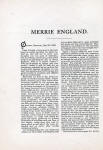 |
| |
eur023 |
-izing.
A glorious day is behind us, and
must be described, even though faintly,
and imperfectly by our feeble pen.
A
hasty stroll around part of Coventry
gives us a peep at the original "Peeping
Tom" as he glanced from his niche at the
fair lady en
dishabille, and as he stood when
he inspired Chaucer's story.
A
hasty visit to old St. Mary's Hall
and grand old St. Michael's church, now
undergoing its restoration. Only a passing
glimpse at each, which deserves and
would well repay a week's visit, and then
we
mount into a nice wagon, drawn by a pair of English roadsters, who with
their load of seven persons, never falter
in their rapid, steady
trot, making with the regularity of
clockwork, eight miles per
hour.
On
leaving the city we glance back at a
view of Tennyson's "Three Spires" of St.
Michael's, St. Mary's and Christ church,
and do not wonder at his
inspiration, and then over an avenue
lined with lovely elms we
reach
KENILWORTH CASTLE.
Yes, here we are, viewing
its massive walls, ten feet in thickness, their plain
sides covered with ivy, looking down
into its dark dungeons, treading its old
banquet hall, gazing upwards in
Leicester's house, at the place from which we
imagine sweet Amy Robsart to have
fallen, and finding an hour all too short, of course, but
hurrying back through gardens
bordered by a new kind of holly, curled and variegated, differing
entirely from ours, we regain our wagon and the
faithful roadsters take up once more
their changeless trot to
WARWICK
CASTLE.
Oh, for the power of mind and hand to
give you even an idea of
the glories of this spot. We
approach it from the outer gate through a roadway cut out of
solid rock, of which the sides ?re
covered with various creeping
vines, and crossing the drawbridge spanning the moat, go under
the overhanging portcullis its huge
spikes suspended in its groove of
rock, go near by ''Grey's Tower" and
the awful dungeon at whose slimy depths a
glance suffices, and emerge upon—what
shall we say?—an earthly heaven. The
most utterly etherealized picture we ever
imagined. The ivy covered battlements
enclosing a smooth sward of velvet green turf, ornamented by droves of
bright colored
peacocks, their plumage rivaling and rivaled by the brilliant flowers in
carefully
tended beds of every design and pattern, and all supported and rendered
more lovely by a
background of the grandest beech
trees we ever beheld between which
the peaceful river Avon sparkled in
the sunshine. Oh, indeed it was so sweet.
How we did long to have all of you
dear ones to enjoy it with us.
A
part of the immense castle is used as
the family mansion, but at
certain seasons visitors are
admitted, and our usual good fortune attending us we enter upon a
palace such as we may have dreamed
of in our youth but never expected to see. The reception room,
probably 50x100 feet, floor of
marble, ceiling lofty and heavily carved, walls ornamented with
armor of all ages, a huge fireplace, and near it a cord of wood neatly
piled in readiness for the winter's
fire.
Adjoining it a gallery, or rather galleries,
of lovely paintings by artists of fame, portraits from which the eyes of
men and women of
history and romance seem to follow
yon in every turn, oaken floors as solid as iron itself and
polished to a high degree,
candelabras of brass fifteen feet in
height, exquisitely wrought, and
with branching arms in readiness to light the
magnificent apartment. In short,
everything that one can imagine as appropriate to the
descendants ot the great Earl, the Last of the Barons, who proudly
called himself "The King Maker."
Once more our time is only too short,
and.awav we fly behind ourfaithfulroadsters
over eight more miles of sweet elm
avenue to
STRATFORD-UPON-AVON.
The
following lines I found written on the register of Red Horse Inn,
Stratford-upon-Avon.
Aren't they sweet and
pretty ?
"While evening waits and hearkens,
While yet the songbird calls.
Before the last light darkens,
Before the last leaf falls,
Once more with reverent feeling
This hallowed shrine I seek,
By
silent awe revealing
The thoughts I
cannot speak.
"(Signed)
william winter.''
How different from
Warwick, and yet ...
|
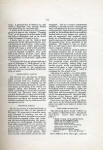 |
| |
eur024 |
...
how peacefully sweet—a suitable place
to
picture the great writer as strolling
along the banks of the peaceful river. We
go for lunch to the Red
Horse Inn, of which our own Irving has so sweetly
written, and get an English lunch because
beauties however beautiful must have substantial support of roast beef
to be well enjoyed, and walk
to the "Shakespeare Memorial," a sweet little theatre,
in which above all things would we
like to see Macbeth.
The front of this building is ornamented
with bas relief designs from the great
poet. Illustrative of tragedy, "Hamlet,
alas, poor Yorick";
History, poor little prince Arthur
praying that his eyes might
be spared; and Comedy, Jacques
in "As You Like It."
The interior is most tastefully provided
with paintings and engravings of eminent
actors and actresses in
characters of Shakespeare's
creation, while without and
immediately on the Avon's grassy bank is a statue of the great
genius himself, seated on a pedestal, around which are
Falstaff, Lady Macbeth, Hamlet and
Prince Hal, all admirably executed in
bronze by Lord Ronald Gower.
Hence we hasten to old Trinity church,
and kneel before the tomb of him who gave the spirit of holiness to this
sweet
spot, and thence to his old home and the
house in which he was born, a most
quaint and curious old place. How little its builders foresaw the fame
in store for it!
And now we are snugly
housed in the excellent Clarendon
hotel, of Oxford, the great university place, not of England
alone, but of the world. Enough,
surely, to form the topic of
a letter itself.
Fancy seeing and enjoying
Coventry, Kenilworth, Warwick and Stratford-ttpon-Avon all in one day, and yet
living to tell the tale! But lest you may be as tired as
ourselves we now say au revoir.
dear citizen:—No
doubt one should
be
a scholar to appreciate this grand university
town, and making no pretension to
much learning ourselves, we must confess
to a feeling of disappointment.
This sensation certainly
does not arise from any previous expectation which
fails of realization. No, indeed; the
magnitude of the numerous
schools surpasses
our most vivid imagination—the innumerable
thousands of volumes of untold value, portraits of all persons who can
possibly lay claim to the honor, all of these things more than come up
to our expectation. But with it all there is a
sense of coldness pervading these
heavy English walls, a want
of warmth or floridity in the style of architecture which
chills and oppresses us. None of the
delightful cheerfulness which so charms the eye even in the dusty
traceries of dear old Melrose. Moreover, the buildings and
statues are grimy and scaling from the effect of ages of this damp
climate, and some of the most
exquisite sculptures so black as to represent the African rather
than the Anglo-Saxon race, and we
are tempted to recommend a free use of
American sapolio.
A visit to the Bodleyan
[sic] library, to a student or bookworm, would be a treat indeed, and
even our uncultivated taste is charmed with the many curious old
books, beautifully illuminated and
written by hand. Think of
the immensity of the labor!
Among these we note a missal
of Queen Margaret dating A. D. 1050;
a manuscript edition of Wycliffe's
Bible of 1382; the Coptic
Gospels, A. D. 1173 ; a small
horn book of the reign of Charles
I, such as was used to teach the
children to read. This was a most singular production,
a printed paper pasted on a paddle shaped piece of wood probably
4x4 inches, the top covered with "ba
be bi," etc., etc., as in our
old elementary spelling book, and below this the Lord's Prayer.
We also glance at the first book printed
in the English language, done bv
Caxton in 1474.
We
next visit the Oriel College, chiefly
interesting as the alma mater of Arnold, Keble and
Wilberforce, and Brazenoze
College (curious name!) to which we are
indebted for Heber.
The most interesting of the colleges to
us
is that of Christchurch, in whose large
dining room we view the portraits of
many distinguished men ; a most striking
one of Gladstone by Mabry,
his almost fierce expression being
set off by the sweet face of
Dr. Henry Hall in an opposite corner.
Of course this grand display has to be disgraced by the beefy
phiz of old Henry VIII, who looks down without a
blush on the spot where he
accomplished
|
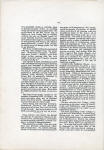 |
| |
eur025 |
his
most disgusting act, in divorcing
sweet Anne Boleyn. It does, indeed, seem
strange to us that
Englishmen of this day can take pleasure in preserving the
memory of one so debased, even
though our Methodist brethren and others will insist that he was
the founder of our church. God save
the mark!
Before leaving the subject of portraits,
we
must mention that which most forcibly
impressed us in the gallery of the Bodleyan
[sic] library. Dean Stanley seemed to look upon us and to read our
inmost
soul. Never do we remember to have
seen a more thoroughly speaking likeness
of
a thoroughly great and good man,
and regret that we have no
note of the artist's name.
From the large dining hall
of Christ-church, in which unhappy
Charles I held his last
parliament, we descend to the
glorious cathedral. At first we are
oppressed here with a chilly sensation; its
huge columns, plainly free from the
ornamental fluting to which
our eyes have been accustomed,
and of a peculiar color,
neither gray nor white, are not pleasing until one enters far enough to
catch the glow of its most
richly colored windows, through which the light streams with
wonderful effect, bringing in the
sweet cheerfulness of one of
our own Southern da3's. of
which, by the way, these poor
English know little. Our experience
(most lengthy—half a week) goes to
prove that it rains on an
average six times each day.
Once more our notes remind us that we
intended to mention a
portrait of John Locke, who, someone
tells us is the greatest man
ever educated at Oxford, and of especial interest to us as having
drawn up the charter of the lord proprietors to
the province of Carolina, both North
and South.
The
ambulatory in the wall of the cathedral's
clerestory is especially beautiful,
affording a passage for choristers in the
old days in the heart of the massive walls
and
extending from one side of the great
east window around nave,
transept and aisle, back again to
the opposite side of the
chancel.
The revedos presented an exquisitely
carved crucifix of some brown stone, in
color resembling bronze, and the chancel
floor is simply adorned
with the sweet words "Spes Caritas Fides."
It
was our good fortune here to meet a
most charming gentleman who, without
a
sixpence, gave us much information of deep interest, pointing ouv one
window
•which had been buried twenty-four years
when so many others were destroyed,
and in its richness affording an idea of
the
loss incurred by this church alone by
the
ardent fervor, called religion, of some
of
the Reformers.
This window gave a likness of the last
Abbot of Oseney, the first Bishop of Oxford,
while one near by, of which the fragments
had been carefully collected and
with great skill replaced, gave a representation
of the death of Thomas A. Becket, of
which the head only was wanting. A slight omission, but rather
important to the full appreciation of the
scene.
A
ramble through the botanical gardens
brings us to Magdalen College—here
pronounced Maudlin, and we are told that the character of the sainted
Magdalen
gave rise to the English word maudlin,
with all its horrible meaning. Sad
thought to us. We would rather remember her, as restored to her
true womanhood by the sweet mercy of the dear Savior, both hers and
ours, who saw in her nothing
maudlin, but only what was
worthy His saving and healing influence and love. At Magdalen
chapel we are struck most forcibly by an illustration
upon glass of the day of judgment.
This was in colors grave and
somber, and yet most realistic, presenting a most awful
idea of the orthodox opinion of that
day, which we all agree will be ''the great and
terrible day of the Lord."
A half day being all that
our brief allowance can give to
Oxford, we now take a swift train which soon lands us
in London, and there find comfortable
lodgings at most reasonable
cost, where we hope to devote
a week to seeing the sights
which should at least have a year
of our life. And it would be well and
profitably spent.
Here we meet happily once more the
other members of our North Carolina
part}7, who have been here two days but
did
not enjoy as we did the jaunt through the midland counties, Warwick,
Stratford and grand, oppressive old Oxford.
|
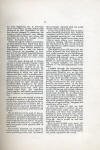 |
| |
eur026 |
P. S.—You may be
interested as we •were in a
curious illustration of how the Jews were treated in the olden time,
now happily gone forever.
While in Christchurch cathedral the
kind gentleman to whom we have referred
took us into an apartment called a "vestry," but differing somewhat
from the one we remember in Asheville, arid pointed out a square block
of stone which had only recently been discovered.
Running his fingers over its dingy lines, he said: "This part was
evidently done in 1280, while this could not have been earlier than
1305, showing that twenty-five years of labor was bestowed upon
it. It is deeply interesting to me,
because before its recovery
I had read in the old
records of this cathedral that somewhere
in the thirteenth century, while a
church celebration was progressing, an insane
Jew attacked the cross bearer and
threw him and his sacred
burden to the ground, and
that the then reigning King had decreed that the Jews should, of
their own labor, provide a costly cross of stone to mark the
spot of the assault, and then after
an apparent lapse of time the record
shows the completion of the work." It contains the questions: "Who
made this cross?" "The Jews made it." "But how
came they to make it?"
"Because the King compelled them."
"What King was it ? ——. Let
us hope that H. R. H. of
that day became ashamed of his meanness
and had his name erased from the
record. But now note the curious
designs on this block of
stone, dug up recently on
the spot referred to in the old records. On one face stands the
King, with a Jew shaped like a
monkey, on either hand. On
the next, Moses and the brazen serpent, typical of the crucified
Christ. Next Adam and Eve
in the garden, while the serpent crawling up the tree looks down
with a decidedly Jewish expression of
nose and face generally; and
fourth, Abraham offering
Isaac on what was afterwards
called the Hill of Calvary.
Can you imagine any heavier or meaner
punishment to be inflicted upon a devout Israelite than to be
compelled to carve in
stone what he would consider the disgrace of his people? Truly, we are
glad that we are
not a Christian of that day.
 |
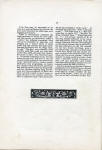 |